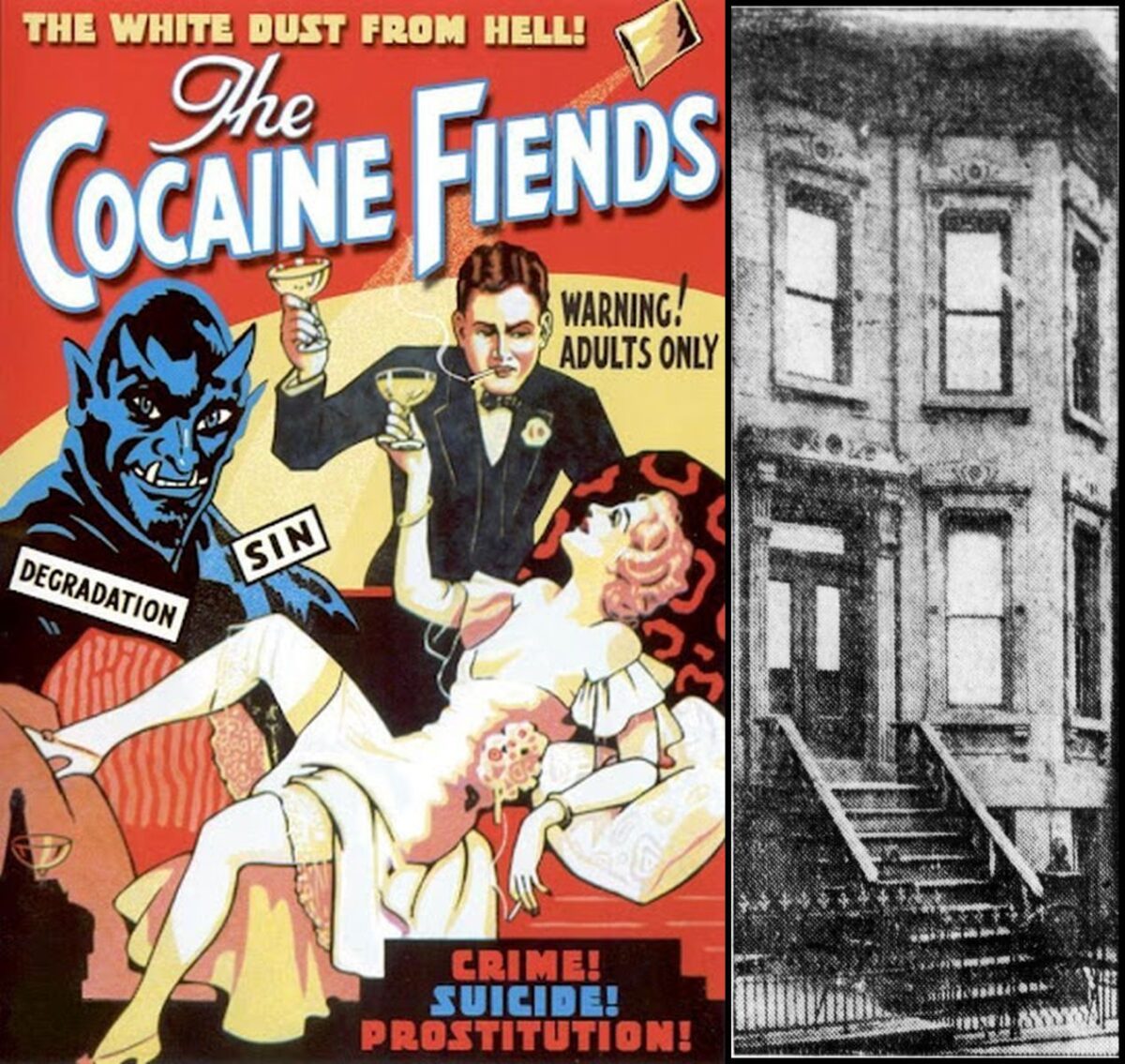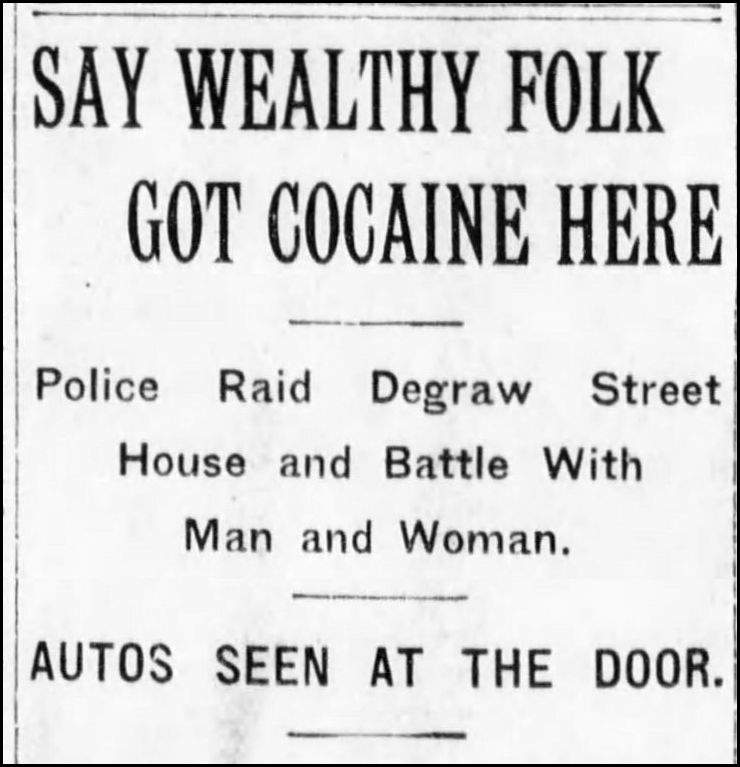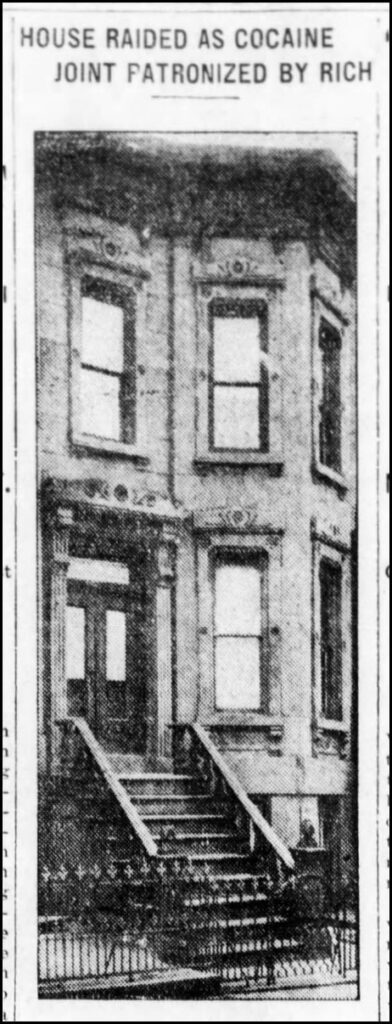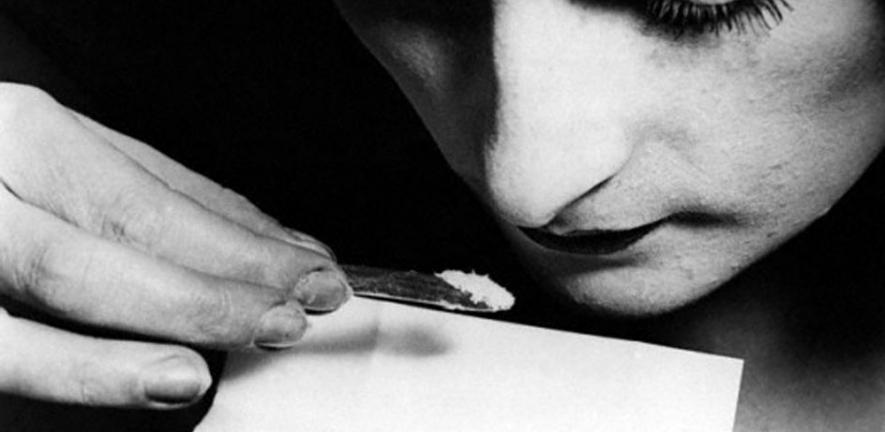IN GOWANUS, AMONGST COCAINE FIENDS (1914)

Brownstone Detectives investigates the history of our clients’ homes.
The story you are about to read was composed from research conducted in the course of one of those investigations.
Do you know the history of YOUR house?
********************************************************************************************************************************
Cocaine abuse truly became a “thing” in the United States starting in the early 20th century. Although it existed here earlier than that, it wasn’t until the early 1900s that states began to prick up their ears to the threat and counter its effects on society.
In 1910, President William Taft declared the white powder “Public Enemy No. 1,” and in 1914, where our story begins, Congress passed the Harrison act, which tightly regulated the distribution and sale of cocaine.
That year, an unassuming brownstone in the less-than-glitzy Gowanus neighborhood in Brooklyn became the target, first, of wealthy cocaine users and then, second, the police.
SAY WEALTHY FOLK GOT COCAINE HERE
“Detectives Asip and Dowd, of the Bergen street station, made a raid at the two-story and basement brownstone house at 666 Degraw street late yesterday afternoon,” noted the Brooklyn Daily Eagle, “and arrested a man and a woman for selling and dealing in cocaine, heroin and opium.
“The attention of the police had been called to the place by some neighbors. The frequent presence of automobiles, carriages and other vehicular equipment of well-to-do persons at the front door aroused suspicion.
“Detectives Asip and Dowd got a tip which led them to believe that the occupants of the house were dealing in drugs and that once in a while there was opium smoking going on. The occupants of the house were a young man and a young woman, of haggard appearance, giving physical evidence of addiction to some drug habit. The officers was so well convinced that they were currying on an illegal business that they went to the house yesterday determined to force their way in.”
MAN AND WOMAN GIVE POLICE HARD BATTLE

“They rang the front doorbell and the young man came to the door. He tried to shut it in their faces, but Asip and Dowd forced their way in, and to the parlor,” the Daily Eagle continued. “The man was barely dressed. He gave the officers a fight, but they overpowered him.
“Then they turned to encounter a struggle with the young woman, who came from a room upstairs, bare-footed and clad only in a kimona. She fought like a tigress, but the detectives gently subdued her.
“The police made both man and woman prisoners and then searched the house. They found a lot of cocaine, a pipe and opium layout, some morphine, some heroin, a mortar and pestle used to mix the stuff, and a loaded magazine revolver, which was found on a bureau.
“While the officers were making their examination of the place, which was comfortably furnished, two men came to the door. One was Joseph F. Miller, who said that he lived on Sixth avenues and stated that he had come to find a truckman to move him. More closely questioned, he admitted that he had visited the house to pay for come heroin that he had bought some time ago, and to order more. Another man, Howard Conover, who said he lived on Wierfield street, also came, looking. it Is alleged, for some of the drug.
“The two men will be witnesses against the principals.”
SAY PLACE DID A WHOLESALE BUSINESS
 “The police say that the man and woman did a wholesale business, and, although victims of the drug, they were making money. The prisoners described themselves at the Bergen street station as Charles Alfano, aged 23 years, and Emily Kelly, aged 22 years.
“The police say that the man and woman did a wholesale business, and, although victims of the drug, they were making money. The prisoners described themselves at the Bergen street station as Charles Alfano, aged 23 years, and Emily Kelly, aged 22 years.
“This morning in court they claimed to be husband and wife. They were arraigned before Magistrate Naumer and were held for having in their possession and in dealing in, cocaine and heroin. An additional charge of having a revolver in his house, in violation of the law was, made against Alfano.
“Both had huddled on any clothing they could in his house, in violation of the law was covered by a man’s overcoat, and Alfano wore a rubber raincoat. Their cases will be heard next Tuesday in the Butler Street court.
“The police say that Alfano is a convicted burglar. They had his pedigree under the aliases of Pasquale Violente, Frank Di Vito, Giovanno Rosso and John Ross.
“He has been in the Catholic Protectory, only recently served a two-year term for burglary and was once sentenced to twenty years to jai for burglary. That was on January 18, 1909, when he was convicted before Judge Fawcett in the County Court. He appealed from the conviction , a new trial was granted, and his second trial resulted in a dismissal of the indictment before Judge Dike.
“It is alleged that he was in the illegal drug business in Seventy-third street, Borough Park, before he moved to Wyckoff street.”
———————————————————————————————————————–
 Brownstone Detectives is an historic property research agency. Our mission is to document and save the histories of our clients’ homes. From our research, we produce our celebrated House History Books and House History Reports. Contact us today to begin discovering the history of your home.
Brownstone Detectives is an historic property research agency. Our mission is to document and save the histories of our clients’ homes. From our research, we produce our celebrated House History Books and House History Reports. Contact us today to begin discovering the history of your home.
